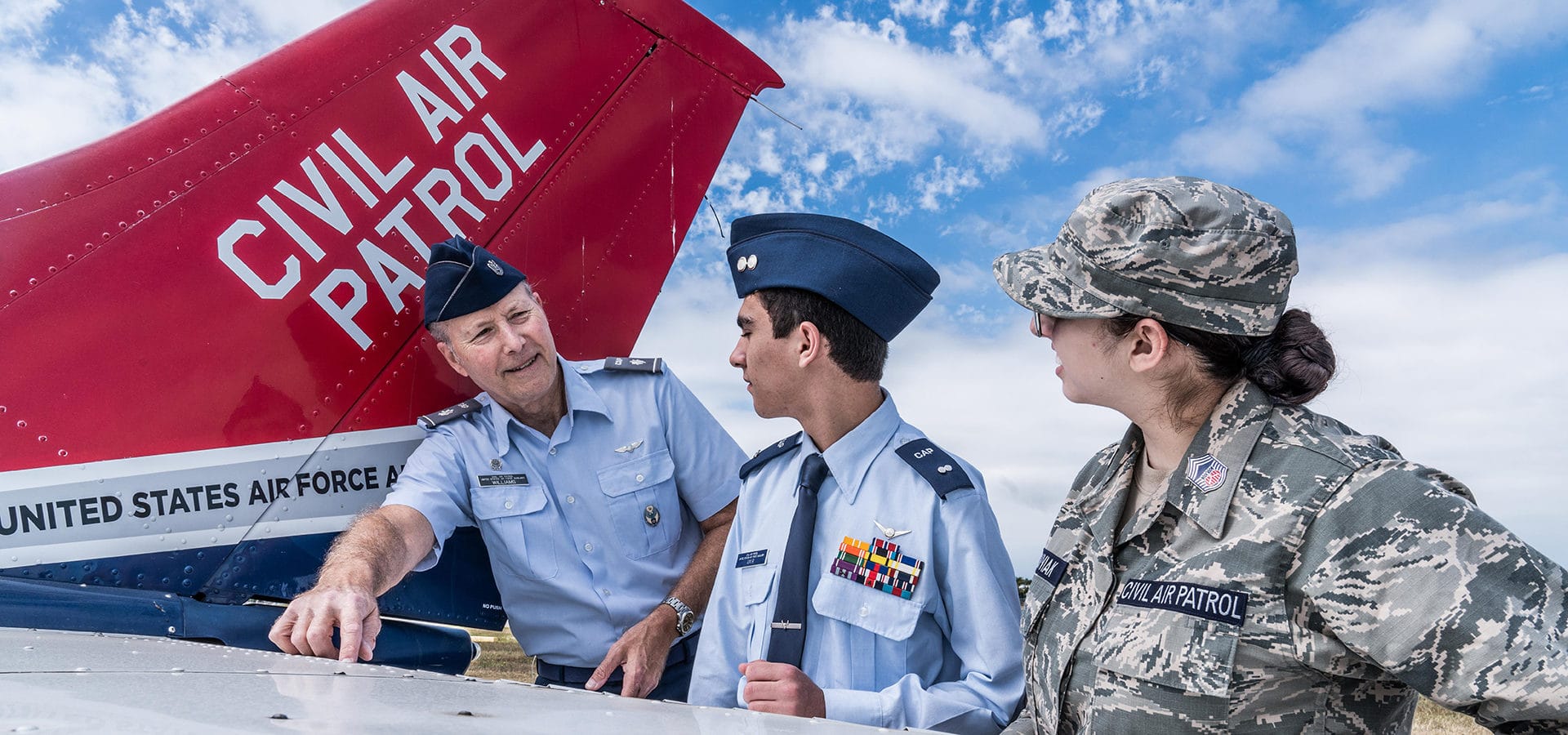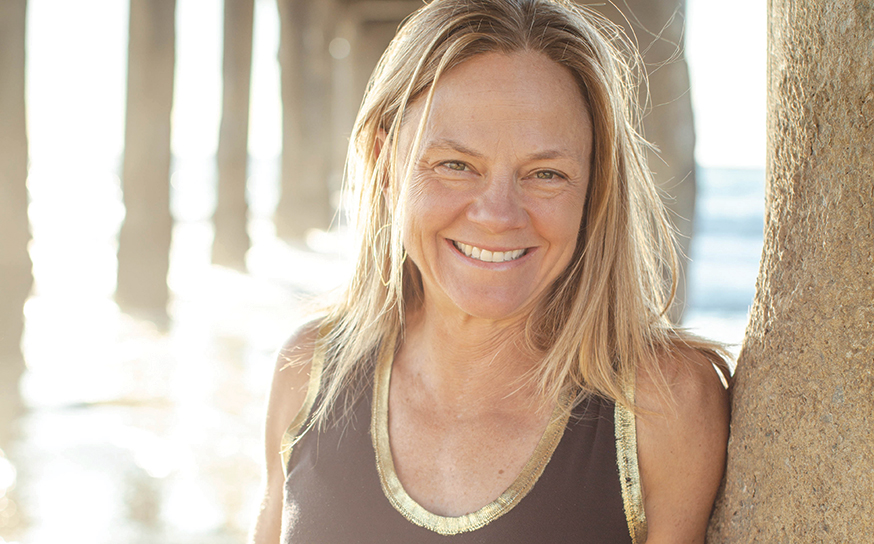Meet a Few of the South Bay Residents Who Serve with Honor in Torrance as Part of a Nonprofit Auxiliary of the U.S. Air Force
Keep it civil.
- CategoryPeople
- Written byDiane E. Barber
- Photographed byShane O’Donnell
Nearly 80 years ago, the vision of a World War I pilot fueled the formation of the Civil Air Patrol—an effort to mobilize American private citizen aviation resources in the face of World War II. Torrance Municipal Airport – Zamperini Field is home to the public service organization’s South Bay Senior Squadron 129 and the Beach Cities Cadet Squadron 107 Knights.
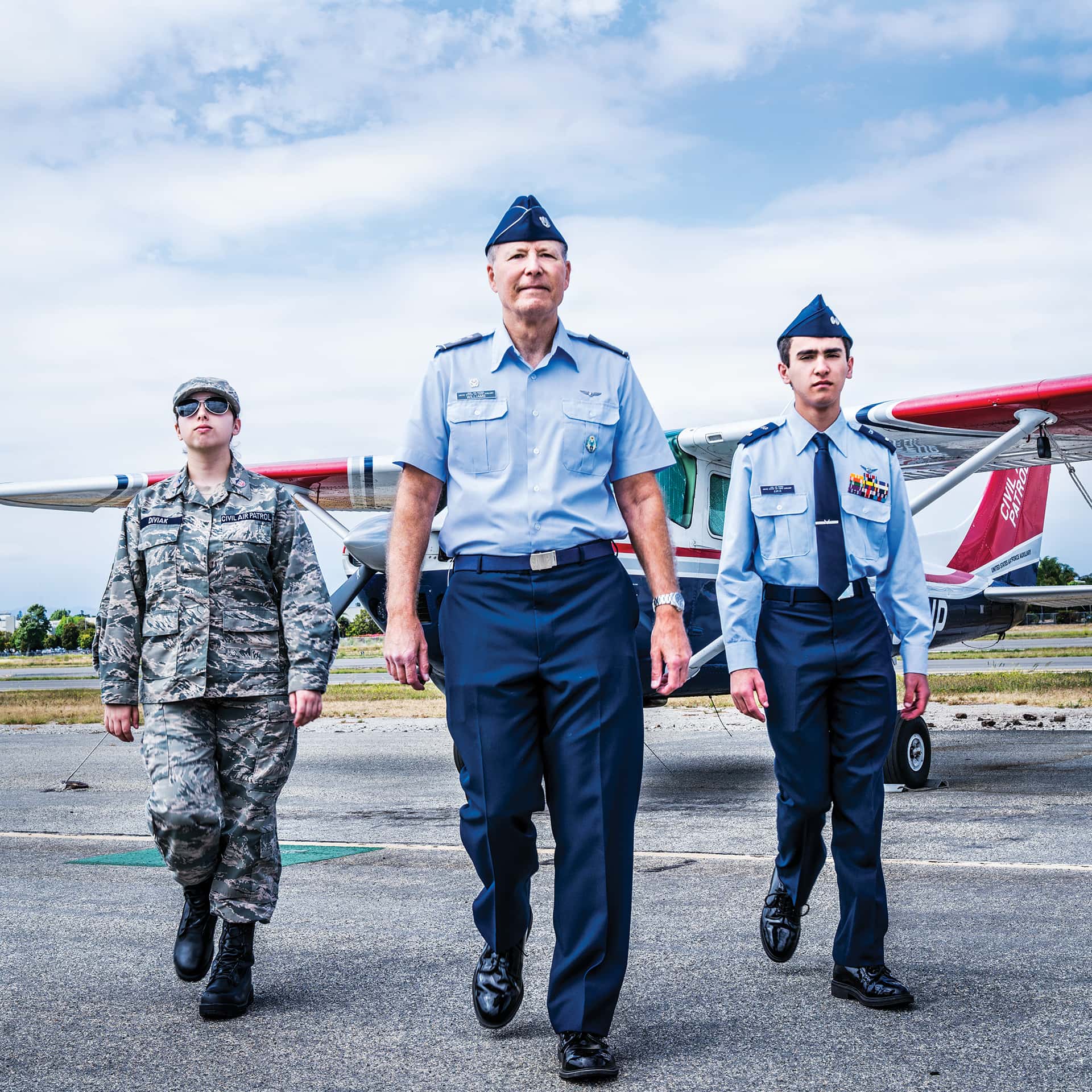
The Civil Air Patrol (CAP) is a nonprofit auxiliary of the United States Air Force, headquartered at Maxwell Air Force Base in Alabama. It was founded on December 1, 1941, by American veteran and aviator pioneer Gill Robb Wilson—the week before the attack on Pearl Harbor. From Maine to Mexico, 21 bases were established to help patrol the U.S. coasts. A cadet training program was launched in 1942 for boys and girls ages 15 to 18. In 1948 CAP became the civilian auxiliary of the U.S. Air Force.
Today there are 60,000+ adult and cadet volunteer members—U.S. citizens and legal residents—serving close to 1,500 communities throughout the country. CAP owns 520 aircraft procured by the U.S. Air Force, which is the largest fleet of small aircraft in the world. They are located in regions that are divided into CAP “wings” throughout the U.S. and in Puerto Rico.
The organization’s mission: “Supporting America’s communities with emergency response, diverse aviation and ground services, youth development and promotion of air, space and cyber power.” In addition to search and rescue missions, CAP provides disaster relief, homeland security and counterdrug activities. It also promotes aviation and aerospace education and develops youth leadership through the cadet program.
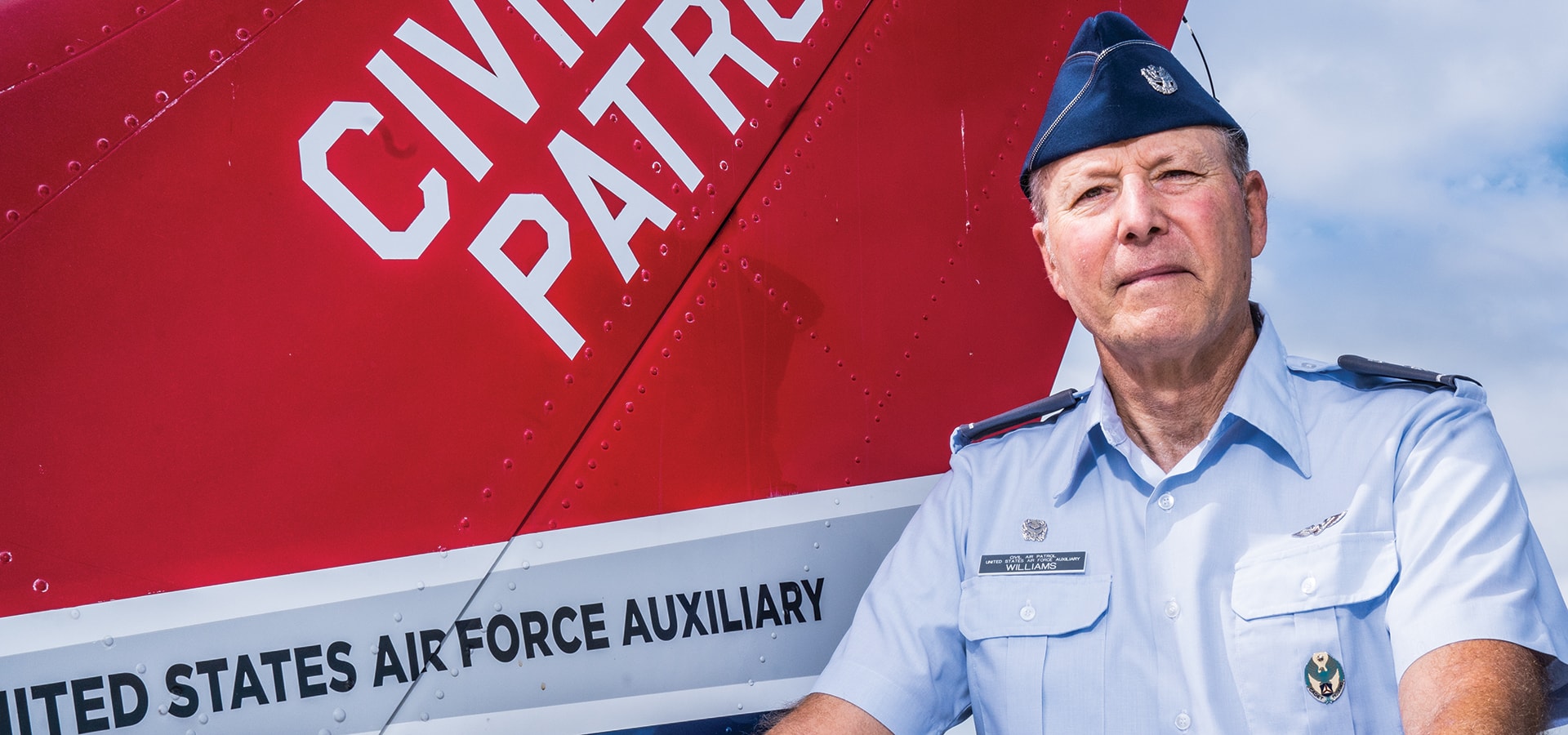
Squadron Goals
Lt. Colonel Mark Williams, commander of Cadet Squadron 107, joined CAP in San Jose when he was just 13 years old. He had an interest in planes and flying since childhood and was inspired to join after learning about the organization at an informational event held at his middle school. By age 18, he had his pilot’s license.
After he received his B.S. degree in business, he moved to the South Bay in 1978 and attended the Northrop Institute of Technology, becoming a licensed aircraft mechanic. Today Williams is one of 40 local senior CAP volunteers (pilots and non-pilots) at Torrance Airport. He has also previously served as the CAP director for the state of California.
“In this program, we want the cadets to make mistakes that they will grow from, so we put them in situations that they have never been in before.”
CAP assists with missions when state resources request additional support with emergency situations, both in the air and on the ground. “CAP assisted with 9/11 damage assessment by providing the first aerial photographs, because we were flying and doing emergency flights when everyone else was grounded,” he says. “We also do Air Force-requested search missions, provide official emergency services—such as aerial photography of major fires—and we flew samples for COVID-19 testing at the beginning of the pandemic, which was faster than FedEx overnight services. Our ground teams help various organizations, including packaging food for the L.A. Unified School District’s meal program, providing post-earthquake manpower to support the Red Cross, and other community emergency services in compliance with CAP’s mission statement.”
Senior Squadron 129 is assigned a Cessna 182 in Torrance for flight missions, which is available to other squadrons such as Santa Monica if it is needed. Typically the plane is in operation a couple times per week. CAP does not train adults as pilots, but if someone has a license they are welcome (200 flight hours are required to fly an aircraft). Non-pilots interested in aviation and prior service members with honorable discharges are also members.
“Our philosophy is that everyone is welcome, including people with disabilities,” Williams adds. “Being a part of CAP is a great opportunity to contribute to the community.”
He is especially proud of the Beach Cities Cadet Squadron 107. “The cadet program offers local youth between the ages of 12 and 21 learn-by-doing team leadership training,” he says. “In this program, we want the cadets to make mistakes that they will grow from, so we put them in situations that they have never been in before. This allows them to experiment in an environment that fosters support and encouragement.”
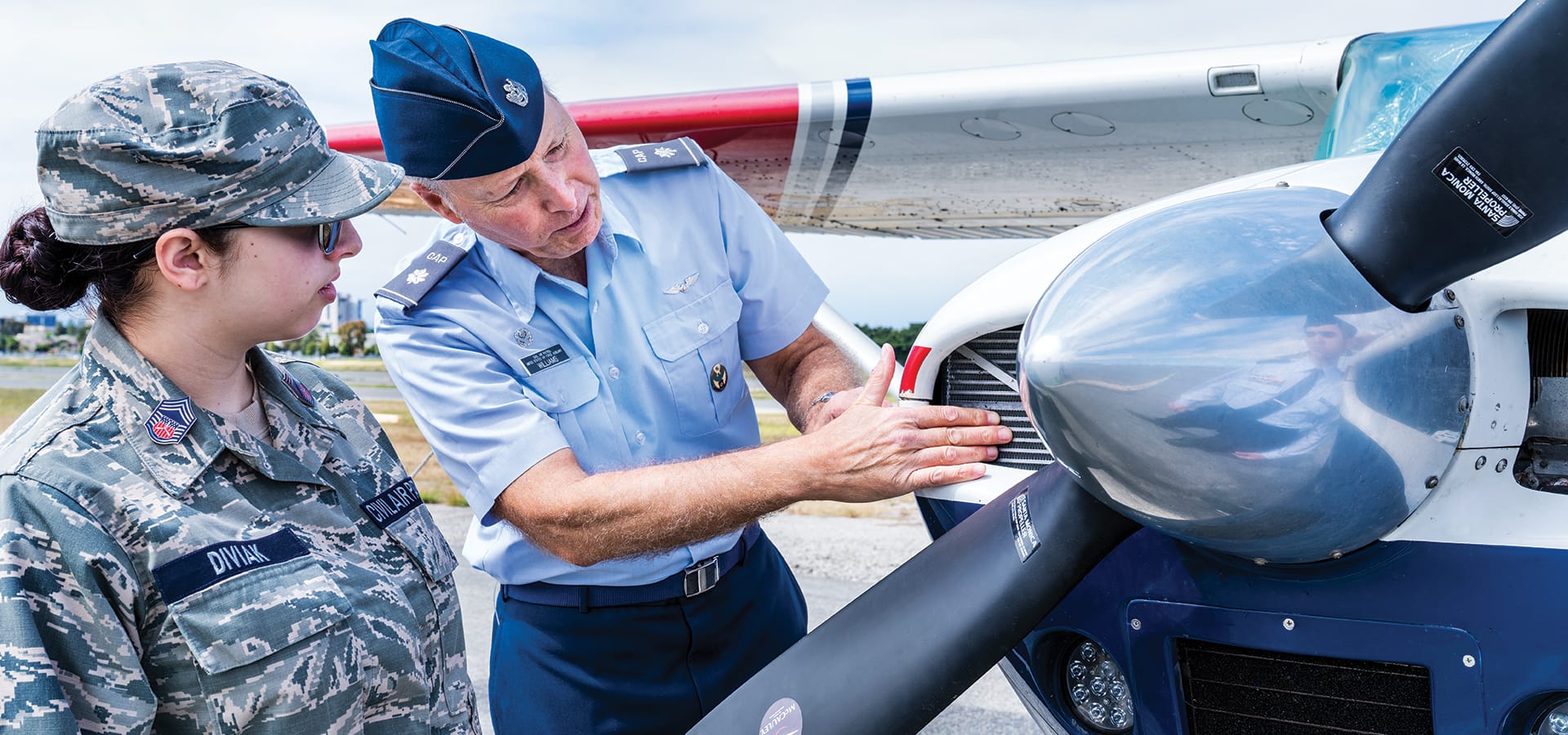
Currently there are 35 cadets in the local squadron. The program offers aviation and aerospace career exploration as well as insight into the U.S. Air Force. Each cadet receives five aircraft orientation flights in the Cessna 182 to become familiar with flying. If interested, they can pursue flying in a glider program and a similar program for powered flying.
“In addition to leadership skills, cadets learn self-discipline and what it means to give back to the community, among many other things,” he says. “Three of our cadets are now in the Air Force Academy, and others have joined different branches of the military, have pursued law enforcement and have become firefighters. In fact, the first female Air Force Thunderbird pilot was a cadet from California, and a retired L.A. County Fire Department battalion chief was also a cadet.”
Most of the cadets who join learn about CAP via word-of-mouth, internet searches and community outreach events, such as the one that Williams attended as a youth. “In addition to educational events at local schools, we work closely with Fort MacArthur Museum events,” he notes. “Every February the museum produces their Great Los Angeles Air Raid of 1942 fundraiser and dance, and we help with parking, crowd control and other activities. The cadets wear WWII uniforms provided by the museum and sound air sirens in the spirit of the evening. We also support the Western Museum of Flight at Zamperini Field. Basically we help out with most aviation public events in the community.”
The local CAP squadron has also participated in CyberPatriot—a national youth cyber defense competition sponsored by the Air Force Association. The high school cadet team won third place at the first competition in 2010, and the middle school cadets placed first and won the division title at the 2014 national finals. Williams says several cadets have pursued career paths in computers as a result of the association.
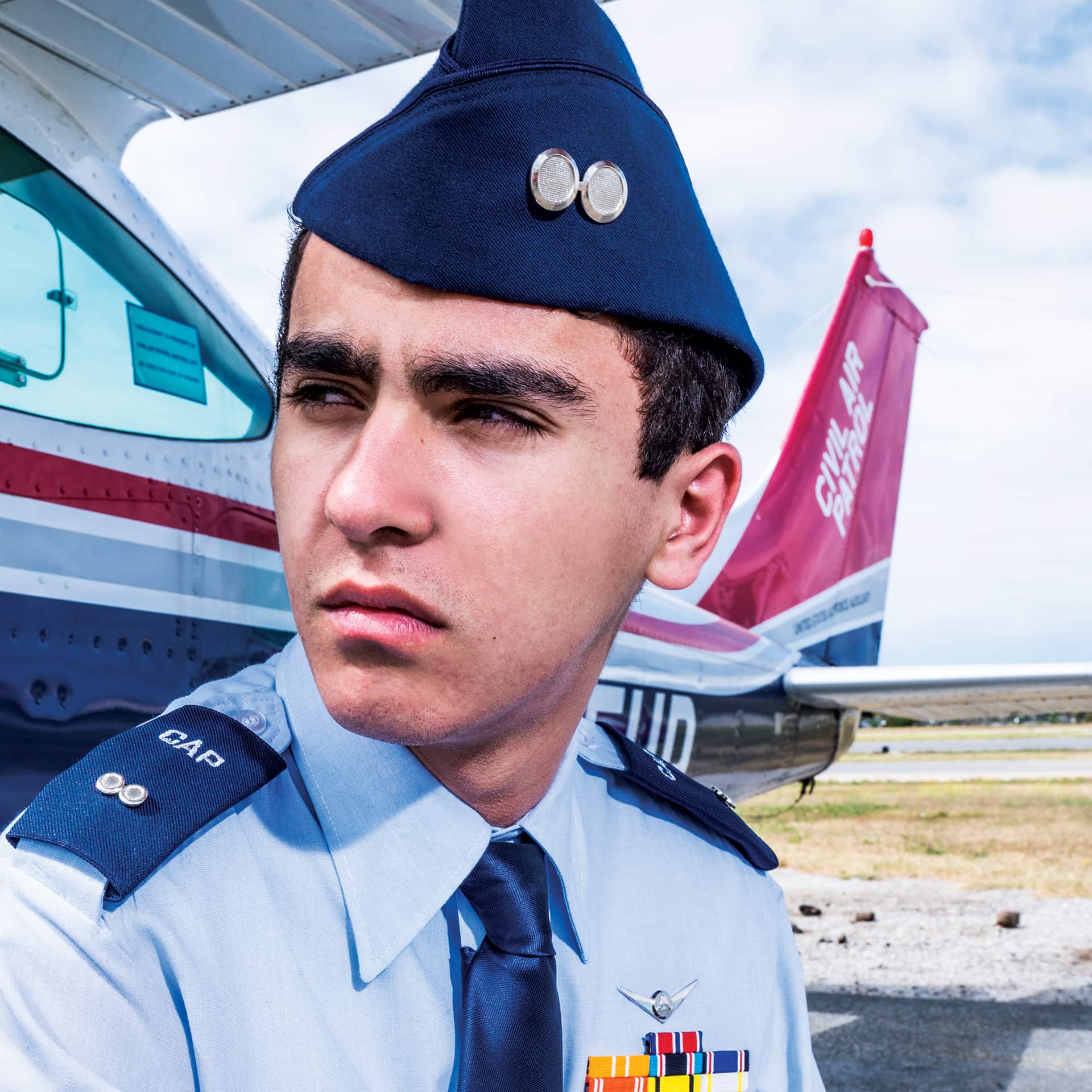
Growing Up Cadet
Palos Verdes resident Daniel “Max” Amir joined the Beach Cities Cadet Squadron 107 Knights as an airman when he was 12 years old. In five years he worked his way up to the rank of cadet first lieutenant and his position as the cadet commander. He is also a glider pilot with approximately 25 solo flights to his credit.
“I have been around aerospace my entire life,” he shares. “My grandfather has worked in the industry for over 50 years, and my uncle is a corporate jet pilot and former U.S. Army skydiver. I joined the CAP cadet program soon after I met Colonel Williams at an event at Fort MacArthur in San Pedro.”
Amir started flying gliders at a national CAP flight academy in Vermont at age 14. He also had his first solo flight there when he was 15, before he started to fly in California at Los Alamitos, where he currently flies.
In addition to serving the community and flying, he enjoys the educational and travel opportunities within the organization. He has traveled throughout California and to Vermont to participate in CAP events. There is also a CAP International Air Cadet Exchange program that he will apply for this winter. The age requirement is 17, and there is an opportunity to travel for three weeks to one of 15 countries. When he applies, he will pick the top three countries he would like to be considered for.
Amir’s current CAP position requires more of his time than his earlier years as a cadet. “I definitely put in more hours now,” he says. “We usually have a two-hour cadet meeting every Wednesday night and then a one-hour staff meeting afterwards. But now we have meetings twice a week, and because of COVID-19, CAP headquarters requires virtual meetings over the internet.”
With his sights set on the future, he also aspires to pursue a medical career. “I may become a pilot after I retire from medicine. But for now, being a CAP cadet is one of the best things I can be doing at my age. Teaching and sharing my knowledge with other cadets are my favorite things to do.”
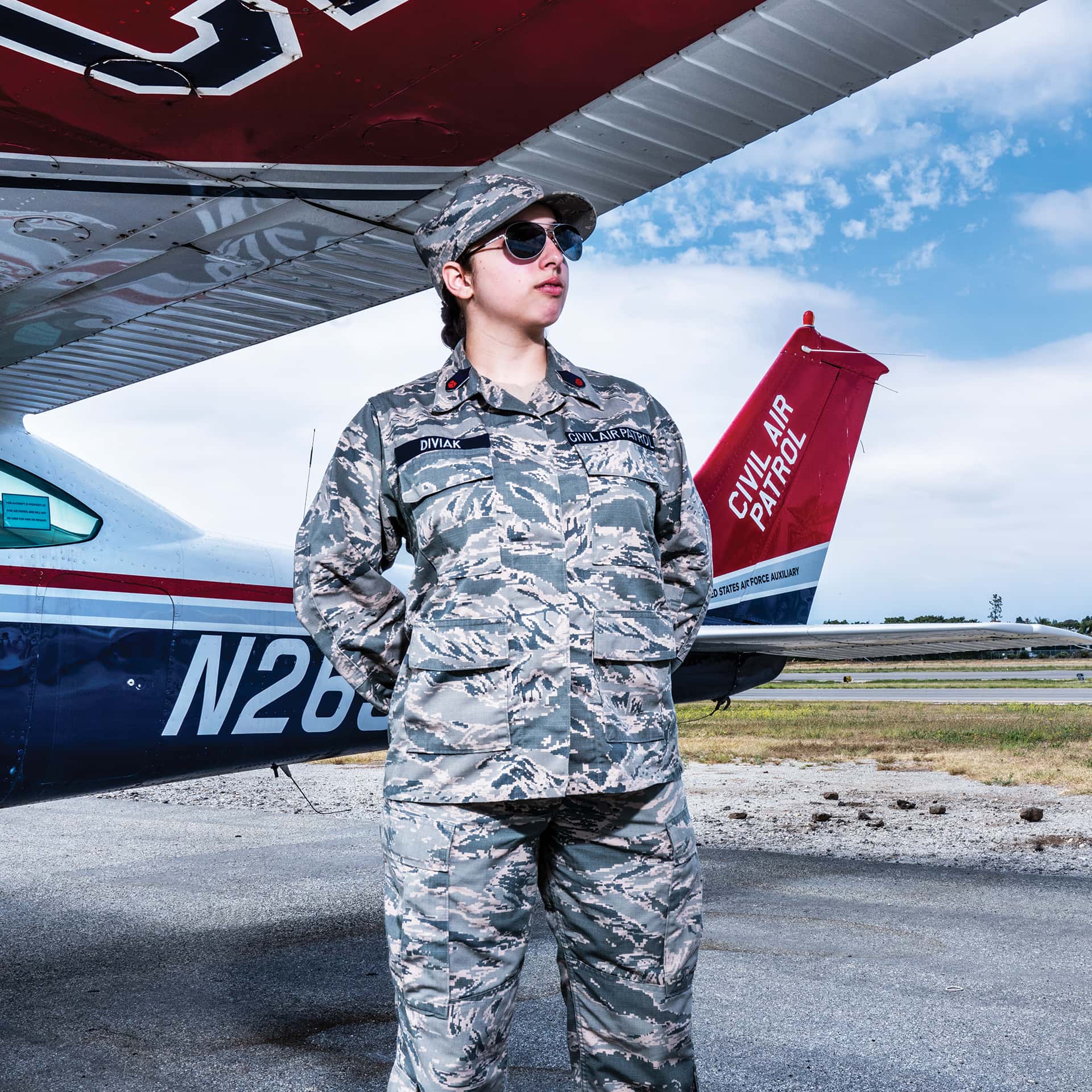
She Serves
South Bay native Cassandra Diviak celebrated her three-year anniversary as a CAP cadet in July and is the sole woman in Squadron 107. She is a chief master sergeant, which is the highest noncommissioned cadet rank, and is working toward a cadet second lieutenant rank.
She learned about CAP at a Palos Verdes High School career day and through a family friend who is in the Air Force. Her stepfather, who served in the U.S. Navy, was her greatest supporter and encouraged her to apply. “After one meeting, I was inspired to join with a focus on the leadership experience opportunities,” she says enthusiastically.
Diviak became a cadet when she was 16 years old and was the only girl and oldest recruit in the training program. “The training process is an introduction to the basic fundamentals of everything we need to know about the larger concepts of CAP, from how to march to leadership,” she explains. “The tests include drills and ceremonies (marching), physical fitness (push-ups, sit-ups and running) and a written leadership exam. Lastly, there is a review in front of a board of three officers based on CAP’s core founding values and aerospace education.”
Gender differences are an inspiration rather than a deterrent as high-achieving Diviak earns her way through the ranks. In her current CAP position, she oversees on average 20 cadets at any given time.
“I have a unit of people who work under me, and we develop training curriculum,” she says. “I have a responsibility to ensure that the cadets are getting the best training possible in the limited amount of time available to them. My primary responsibility is to turn the cadets I serve into leaders. As an organization, the CAP seeks to shape young people into the leaders of tomorrow with confidence, respect and integrity, and [encourages them] to strive to be excellent in all they do. Therefore, I am a role model for their leadership journey and must walk the walk to inspire them. I train with them, give them feedback, guide them toward a path of greatness. Every step of the way, I am there with them to lead the way and help them obtain program-set goals.”
With a law career on the horizon, Diviak is entering her sophomore year at Loyola Marymount University, majoring in political science and minoring in women’s and gender studies. She is considering specializing in constitutional law due to her vested interest in politics. Loyola was her chosen university because of its emphasis on social justice and community service.
“Ever since I was a little kid, I liked to talk and write. Anytime I could get my hands on a debate, there was no stopping me,” she says. “Even in elementary school, teachers thought I was going to be an attorney. In high school I was on the debate team, and I was captain of the speech team during my senior year. Debate tended to have a disparity of females. I was usually the lone female in the room and was often not taken seriously because of my 5’1” height. I was a finalist in one of the largest competitions in the state during my junior year and was the local league champion my senior year. That experience has helped me succeed as a cadet and has better prepared me for pursuing a law career.”
In addition to attending college and volunteering for CAP, Diviak works for her family’s business. “My family has mental health clinics throughout California that provide services to people with substance abuse. I am an administrative assistant for some of the medical staff. Helping people is a passion of mine.”
Southbay ‘s Annual Spring Style Guide Has the Latest Fashion Trends, Jewelry, Home Goods and Gifts!
Shop local and support our amazing businesses.






